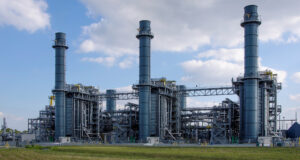 Thirty-two power plants with a combined capacity of 3,811MW either produced no electricity at all or used only 15 per cent of their capacity in the past financial year, an analysis of data from the Bangladesh Power Development Board showed.
Thirty-two power plants with a combined capacity of 3,811MW either produced no electricity at all or used only 15 per cent of their capacity in the past financial year, an analysis of data from the Bangladesh Power Development Board showed.
These no or barely-used power plants account for a fifth of Bangladesh’s massive power fleet, comprising 152 power plants, dozens of which remain idle most days for various reasons – the dollar crisis, technical glitches, and poor transmission and distribution systems.
The combined generation capacity of these poorly performing power plants makes up 17 per cent of Bangladesh’s overall installed capacity of 22,348MW.
Of the power plants, 14 produced zero electricity, while 18 operated at less than 15 per cent of their capacity between July 2022 and June 2023.
Keeping the power plants idle or underperforming was the last thing Bangladesh could afford because 13 of them were privately owned and built with capacity charge entitlements.
While the idle private power plants generated huge annual expenses with their massive overcapacity, the state-owned power plants drained millions spent as fixed costs for the overstaffed power plant’s maintenance and salaries.
‘This is just crazy,’ Hasan Mehedi, member secretary of Bangladesh Working Group on External Debt, told New Age.
‘Bangladesh continues expanding its power generation capacity based on imported fossil fuel amid massive overcapacity and a severe dollar crisis,’ he said.
Out of the overall generation capacity, Bangladesh can barely use half of it, for one reason or another, with over Tk 1.04 lakh crore paid since 2009 as capacity charge to 82 independent power producers and 32 rental power plants, mostly in dollars.
The capacity charge is the amount the government agrees to pay in power deals, ensuring private investors’ profit regardless of the amount of electricity produced.
Over the next four years, the overall power generation capacity will increase by more than 43 per cent, according to the parliamentary standing committee on power, energy, and mineral resources, potentially further worsening the overcapacity problem.
Plant-specific financial data for the past year is still unavailable, making it difficult to know how much the most underperforming power plants cost.
But the financial report for 2021–22 offers a glimpse into the power plant’s potential costs.
In 2021–22, PDB documents showed that 10 of the 13 privately owned power plants had taken a capacity charge of Tk 1,500 crore.
The three other private power plants did not get any capacity payments as they remained out of order the entire year.
Of the 19 government power plants, 13 spent more than Tk 1,300 crore in fixed costs—for maintenance and salary.
Fixed costs spent by the rest of the six government power plants were also not available.
Among the 14 power plants that generated no power at all in the last financial year, 10 were owned by the government, representing a fifth of the overall power plants owned by the government.
The idle government power plants are also no less expensive than private power plants.
For example, the 330 MW Shahjibazar power plant needed Tk 346 crore in fixed costs in 2021–22, followed by Tk 305 crore spent for the same reason by 260MW 3rd unit of the Ghorashal power plant and Tk 275 crore spent by 210MW Shikalbaha power plant.
The poorly used government power plants mostly operated at about 5 per cent of their capacity for the entire financial year.
Power sector expenses are sure to increase this year because of the strong devaluation of the taka against the dollar.
The ratio of power plant use to its original capacity is called the plant load factor.
The plant load factor steadily declined from 53.91 per cent in 2011 to 41.88 per cent in 2020–21.
Idle power capacity increased electricity generation costs as Bangladesh spent Tk 71,684 crore in 2021–22, a 75 per cent increase in expenditure since 2019-2020.
The annual financial loss of the PDB was on the verge of reaching Tk 54,000 crore in the past financial year, up from Tk 29,915 crore recorded in 2021–22.
Energy experts have repeatedly warned that PDB’s mounting losses cannot be mitigated without increasing the plant load factor.
Increasing PLF depends on maintaining a minimum overcapacity, an adequate transmission and distribution system, smart load management, and reduced transmission and distribution loss—the factors that are all absent in Bangladesh and likely to worsen soon, they said.
The power generation cost has increased by 2,516 per cent in the past decade, with rental and quick rental power plants recording the maximum rate of increase in generation cost because of capacity charges.
Rental power plants were introduced immediately after the Awami League assumed power as an immediate measure to tackle power shortages and were supposed to expire in a maximum of five years.
But the government continued to renew them one after another. Some rental power plants are still in operation.
The maximum retail cost per unit of electricity went up to Tk 7.13 in 2020–21, recording a 91 per cent increase since 2010–11.

New Age









